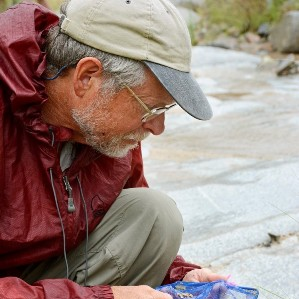Sustainable Biodiversity Conservation of Springs Ecosystems
A special issue of Sustainability (ISSN 2071-1050). This special issue belongs to the section "Sustainability, Biodiversity and Conservation".
Deadline for manuscript submissions: closed (20 May 2022) | Viewed by 1893
Special Issue Editor
Interests: conservation; biogeography; ecohydrogeology; evolutionary ecology; fluvial ecology; rivers; sensitive species; springs ecosystem ecology
Special Issues, Collections and Topics in MDPI journals
Special Issue Information
Dear Colleagues,
Springs are points at which groundwater is exposed at the Earth’s surface. They are increasingly recognized as point-sources of ecological and sociocultural interactivity and are among the most sustainable ecosystems. The purpose of this Special Series is to present syntheses, case studies, recent information, and creative thinking on the sustainable stewardship of springs around the world.
Authors are invited to contribute original research on and around the following array of topics:
- The need for enhanced stewardship of springs and springs-dependent species;
- Defining springs ecosystem sustainability;
- Hydrogeological and ecohydrological sustainability;
- Patterns of biodiversity among springs ecosystems;
- Evolution of endemism and biodiversity among springs;
- Springs as hotspots of cultural and biological diversity and interactivity;
- Progress and challenges in springs ecosystem inventory;
- Assessment of springs ecosystem integrity and its use in planning;
- Information management needed for sustainable management of springs;
- Springs conservation case studies;
- Monitoring: its role in enhancing sustainable springs management.
The intended audience for this work will be scholars, students, environmental and conservation practitioners, and naturalists interested in improving scientific understanding and the application of that understanding to better inform future research, management and policy.
Dr. Lawrence E. Stevens
Guest Editor
Manuscript Submission Information
Manuscripts should be submitted online at www.mdpi.com by registering and logging in to this website. Once you are registered, click here to go to the submission form. Manuscripts can be submitted until the deadline. All submissions that pass pre-check are peer-reviewed. Accepted papers will be published continuously in the journal (as soon as accepted) and will be listed together on the special issue website. Research articles, review articles as well as short communications are invited. For planned papers, a title and short abstract (about 100 words) can be sent to the Editorial Office for announcement on this website.
Submitted manuscripts should not have been published previously, nor be under consideration for publication elsewhere (except conference proceedings papers). All manuscripts are thoroughly refereed through a single-blind peer-review process. A guide for authors and other relevant information for submission of manuscripts is available on the Instructions for Authors page. Sustainability is an international peer-reviewed open access semimonthly journal published by MDPI.
Please visit the Instructions for Authors page before submitting a manuscript. The Article Processing Charge (APC) for publication in this open access journal is 2400 CHF (Swiss Francs). Submitted papers should be well formatted and use good English. Authors may use MDPI's English editing service prior to publication or during author revisions.
Keywords
- conservation
- crenbiontic species
- ecohydrology
- ecology
- ecosystem assessment
- management
- springs
- springs-dependent species
- stewardship





